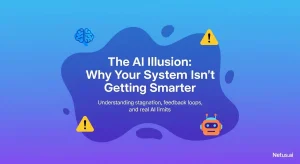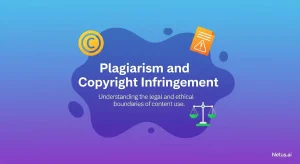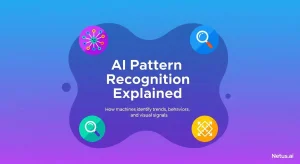Significance of Scanning SOPs with University Plagiarism Checker: Ensuring Academic Integrity
Ashley Merit
Content writer and editor for Netus.AI
Table of Contents
Importance of Analyzing SOPs with University Plagiarism Checker Tools in the UK
Significance of Scanning SOPs with University Plagiarism Checker. Statement of Purpose (SOP) plays a crucial role in the admission process of a student in various academic programs. It is typically an essay containing several sections that express the interests and ambitions of a prospective student seeking admission into a particular course. Therefore, evaluating SOPs with university plagiarism checker tools is essential to maintain the integrity and quality of the admission process.
In an SOP, the writing should flow cohesively, focusing on forming meaningful paragraphs rather than relying on lists. Students must explain the rationale behind their chosen course and demonstrate their educational qualifications and relevant work experience.
Following the standard SOP format is crucial, but students should avoid downloading and using sample SOPs as their own. Plagiarism detection tools, such as Scribbr Plagiarism Checker and Turnitin UK, play a vital role in academic integrity and help universities identify plagiarized content.
Universities and colleges rely on the applicant’s SOP, along with their academic details, while reviewing applications. A well-crafted SOP that aligns with the candidate’s academic qualifications increases the chances of securing admission to the chosen course.
In conclusion, employing plagiarism checkers in universities and educational institutions is paramount for maintaining high academic standards and ensuring the authenticity of the submitted SOPs. Encouraging students to produce original content in their SOPs fosters a fair and competitive admission process.
Browsing Can Be Helpful, Copying Isn’t
Gathering enough information is crucial in discovering the most appropriate course and university aligning with one’s career preferences. It’s vital to articulate the reasons for selecting a particular field of study while composing the statement of purpose (SOP).
Numerous sample SOPs can be found on the internet, and students might be tempted to copy from them. Browsing these examples to grasp the format is acceptable, but copying them verbatim undermines the essence of an SOP.
To maintain academic integrity and uphold originality, students should avoid self-plagiarism and ensure that they don’t accidentally lift phrases from the samples. In situations where unintentional plagiarism occurs, using a trustworthy plagiarism tool to scan the essay can rectify the issue. By doing so, one can ensure that the content is free from existing content on web pages and showcases an honest representation of their writing.
Understanding Citation Styles and Formats
Effective use of citation styles and formats is crucial for students writing essays and SOPs. Students are often familiar with research papers and essay writing from their undergraduate experience, but the requirements for citation in essays and SOPs may vary slightly.
Incorporating quotes in an essay or SOP can help emphasize a student’s perspective, but it is essential to include proper citation for the material. Quotes should always be enclosed in quotation marks. While using references to support personal viewpoints in an SOP is acceptable, crediting the original source is necessary to avoid plagiarism.
Citations in SOPs may differ from research papers, but the importance of acknowledging sources remains the same. Using someone else’s work as one’s own is considered unethical and can lead to academic consequences. Utilizing a plagiarism checker with a percentage feature can assist in identifying any unintentional errors in an essay or SOP. This tool ensures that the submitted work is original and correctly cites any external sources.
Various citation styles exist, such as APA, MLA, and Chicago, to accommodate the requirements of different academic disciplines. It is vital to select the appropriate style to guarantee consistency and accuracy in citing sources. By properly understanding citation styles and formats, students can effectively avoid plagiarism and present a well-researched, cohesive argument.
The Function of SOPs in the Admission Process
Statement of Purpose (SOP) plays a vital role in graduate-level admissions, serving as a crucial tool for university officials during their evaluation phase. With numerous courses offered by different institutions and countless applications submitted globally, an SOP helps distinguish candidates based on their intentions and determination.
A well-crafted SOP should effectively convey a student’s decision to pursue a specific course at the university. Its purpose is to showcase their reasons for applying and demonstrate what sets them apart from other applicants. Not every university explicitly requires an SOP, but it’s always wise to include one regardless. This ensures that the admissions department can grasp the student’s genuine efforts and commitment to the program.
In addition to aiding universities in their evaluation, SOPs benefit the applicants in several ways. For starters, they contribute to the process of course selection, requiring students to carefully consider their interests and long-term goals. Furthermore, SOPs serve applicants as a valuable planning tool and enable them to develop their future career roadmap.
Several entities within academia also benefit from an effective SOP. Whether it’s assignments, books, research papers, or academic journals, they all benefit from robust SOPs submitted by students. Altogether, SOPs hold significant weight in the admission process and offer insight into the applicants’ dedication and clarity of their objectives.
Aspects To Consider While Writing an SOP
When writing a Statement of Purpose (SOP), it is crucial to be mindful of several aspects to create a compelling and effective piece. First and foremost, ensure the SOP is grammatically correct and free of spelling errors. To achieve this, thoroughly proofread the document, and consider seeking feedback from peers, educators, or professors. These individuals can help identify and rectify writing issues and provide suggestions for enhancing vocabulary and overall ease of use.
Next, create a draft outlining key points to include in the SOP. Feel free to explore creativity in writing, but avoid including images, colorful fonts, or unnecessary embellishments. Keep the essay simple and consistent with the intended application. Avoid overly complex sentences or verbosity, focusing instead on a clear and concise presentation.
Refrain from plagiarizing or copying SOP samples found online. Each student’s experience and intentions are unique, making it essential to craft an authentic, personally tailored essay. Emphasize the applicant’s individual struggles, abilities, and aspirations throughout the SOP.
In addition to highlighting the student’s background and experiences, address why the chosen institution is the best fit. Rather than simply praising the university’s reputation, include specific reasons that make it an ideal match for the prospective student. This demonstrates a genuine connection with the institution and a well-thought-out decision-making process.
Keep the SOP’s language simple and easy to understand, but ensure that the tone remains confident, knowledgeable, and neutral. Always write in the third person to maintain a clear and professional voice.
By considering these crucial aspects when crafting an SOP, applicants can create an engaging, effective, and unique essay, demonstrating their suitability for their chosen course and institution.
Detection of Similar Texts in SOPs
When it comes to Statement of Purpose (SOP) documents, having a few similar phrases is not regarded as plagiarism. It’s natural to encounter widely-accepted expressions in multiple SOPs. However, using someone else’s SOP as your own is not a genuine approach.
Many students seek SOPs from seniors or previous students, which can be helpful in understanding the structure and content of an effective SOP. COPYING a senior’s SOP and merely changing personal details, however, is outright dishonesty. Each person’s unique goals and thought process cannot be duplicated in an authentic SOP.
Plagiarism in SOPs can easily be spotted by employing plagiarism detection software, such as Turnitin or Scribbr. These tools offer a similarity score based on their comparison algorithm. For applicants, writing an original SOP that focuses on personal experiences, achievements, and decisions helps avoid plagiarism issues.
Universities and institutions use advanced plagiarism checkers to scrutinize the authenticity of submitted SOPs. Applicants who submit copied SOPs, whether obtained from other students or the internet, risk losing their chance to enroll in the desired course. It is vital to stay away from the practice of copying and pasting while crafting your SOP.
Some plagiarism detection tools also include grammar checker and AI-generated content detection features to help improve the overall quality of the document. To maintain security and confidentiality, always choose a reliable and reputable plagiarism detection tool, like Scribbr.
In conclusion, while similarities in expressions may occur in SOPs, copying whole samples from other sources is unacceptable. Effective plagiarism detectors, such as University Plagiarism Checker UK, assist in identifying copied content in texts. International students can use these tools to review their SOPs and ensure their work is genuine and free from plagiarism.
Frequently Asked Questions
How are plagiarism detection methods used for Statements of Purpose in universities?
Universities employ advanced plagiarism detection tools such as Turnitin to scan Statements of Purpose submitted by prospective students. These tools can identify any content that is copied or not original, thus ensuring academic integrity during the admissions process.
What part do plagiarism checkers like Turnitin play in maintaining academic integrity?
Plagiarism checkers such as Turnitin are crucial in upholding academic integrity by detecting duplicated or unoriginal content in student submissions. They use sophisticated algorithms to compare the submitted text with a vast array of existing academic materials, web pages, and articles. This helps both institutions and students maintain high academic standards and avoid potential consequences for submitting plagiarized work.
Do universities routinely scan personal statements for plagiarism?
Yes, universities often use plagiarism detection tools to scan personal statements and other application materials. This is an essential step in the admissions process to ensure submitted content is original and unique, reflecting the applicant’s true capabilities and aspirations.
Can plagiarism detectors recognize AI-generated content in submissions?
Advanced plagiarism detectors can potentially identify AI-generated content in academic submissions, depending on the sophistication of the tool and the text analysis algorithms it uses. It is advisable to rely on reputable plagiarism checkers when submitting academic work to ensure the highest levels of accuracy and integrity.
What may happen if a plagiarized Statement of Purpose is submitted to a university?
Submitting a plagiarized Statement of Purpose can have severe consequences, including rejection of the application, loss of credibility, and potentially damaging one’s academic reputation. It may also lead to disciplinary action if the student is already enrolled in the institution. To avoid these outcomes, always ensure your Statement of Purpose is unique and entirely your own work.
How dependable are free plagiarism checkers for academic submissions?
The reliability of free plagiarism checkers can vary widely. Some may provide accurate results, while others may have limited databases or outdated algorithms. It is advisable to use reputable plagiarism detection tools, such as Turnitin or Scribbr, to guarantee the most accurate and trustworthy results for academic submissions.

The shortcomings of content generated by AI | NetusAI
Discover why fast, high-volume AI content often fails to deliver real results. Learn about the crucial missing feedback loop and how implementing performance tracking can transform your AI content strategy.

The illusion of AI: Your system's intelligence gap | NetusAI
Stop wasting marketing spend! Most AI tools don’t learn from results, causing content stagnation and low engagement. Discover why your generative AI isn’t getting smarter and what system actually learns and optimizes content.

Plagiarism and copyright infringement | NetusAI
Learn the distinct differences between plagiarism and copyright infringement. Understand the ethical and legal implications and get practical strategies for avoiding both academic and creative work with NetusAI.

Tips and strategies for mobile content marketing | NetusAI
Optimized for mobile-first indexing, learn 5 essential strategies to capture attention, enhance engagement and drive leads and sales with your mobile content marketing.

Web content editing guidelines for the AI era | NetusAI
Review web content editing guidelines for the AI era. Learn how to edit AI-generated content, ensure authenticity and optimize for SEO and readability.

Explaining AI pattern recognition | NetusAI
AI pattern recognition enables machines to identify trends for diverse applications, from detecting plagiarism to fraud. Discover its processes, models and real-world benefits.
